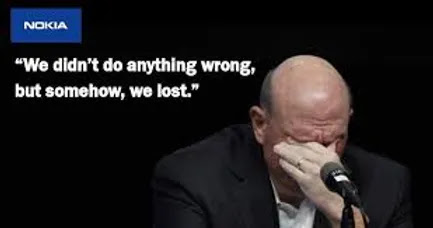Theodore Levitt, the famous Harvard marketing professor, used to tell his students: "People don’t want a quarter-inch drill. They want a quarter-inch hole!" What he meant was that many companies make the mistake of presenting the features of their product, when they should be highlighting the benefits that come from using them.
Focusing solely on the product and ignoring the "big picture," was characterized by Levitt in the 1960s as marketing myopia, considering it one of the major reasons why many new and established products fail.
According to Levitt, many businesses are unable to see where the market is heading. Their approach is short-sighted.
They stop, especially when successful, focusing on the customer, assuming that success will last forever. They don't pay attention to the needs and preferences of consumers, they don't ask them, they don't improve, nor innovate, and lastly they don't monitor the competition.
The examples are countless, with the most notorious being Kodak, Nokia, and Blockbuster, which failed to look ahead and respond to the demands of the times. They believed they were large enough to fall. Therefore, one day they woke up, and everything was gone. But it was already too late...
Levitt himself encouraged business executives to abandon product orientation and become more customer-centric, focusing on the needs and desires of consumers.
When you sell a suit (product), essentially you're selling the need for beauty, when you sell a car, you're selling the need for fast transportation, when you sell toothpaste, you're selling white teeth, fresh breath, and a beautiful smile. And in all three examples, as with the drill, the same need could be satisfied with substitutes, something that if not perceived by the business, could lead it into dangerous paths.
Organizations plagued by marketing myopia strictly define their sector within narrow confines. About a century ago, they started building railroads in America. Later, they were surprised to find that traffic was very limited.
The reason was that they saw their company purely as a railroad and not as a company transporting goods and people. If they had seen it that way, they would have realized that the specific need could be satisfied in other ways as well (e.g., cars, trucks, airplanes).
The bankrupt Alitalia is taught in seminars as the company that identified itself with marketing myopia, as it perceived its sector purely as aviation, while it should have seen it as of passenger and luggage transport. If it had seen it that way, it might have acted promptly, when the "fast trains" also started to claim and take a piece of the market.
Related articles to read: 10 common marketing myths{alertInfo}
When the president of Revlon once asked his salespeople which sector they believed they belonged to, they all replied "well, of course, to the cosmetics sales sector." "No," replied the president, "you work in the dream sales sector." So, let's not forget that what is for sale is not a physical product but the solution to a need. If the product does not meet a need, then there simply is no market...


